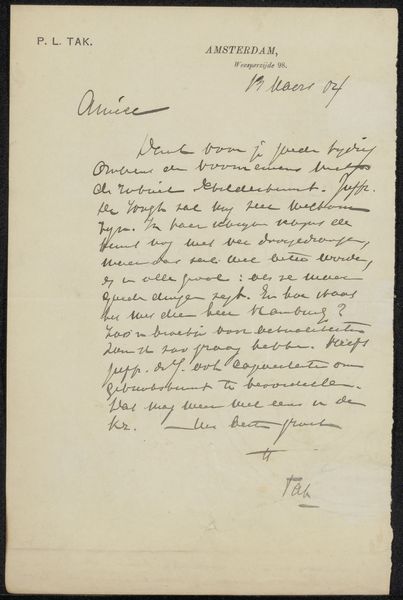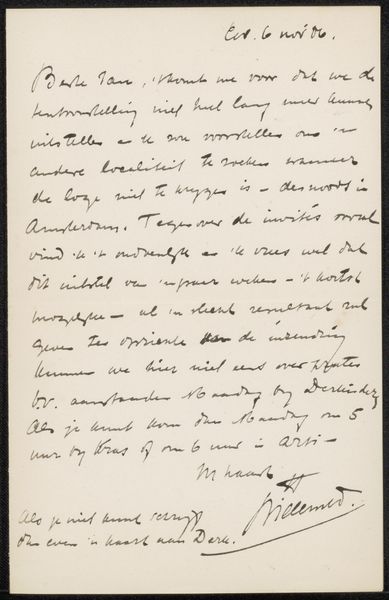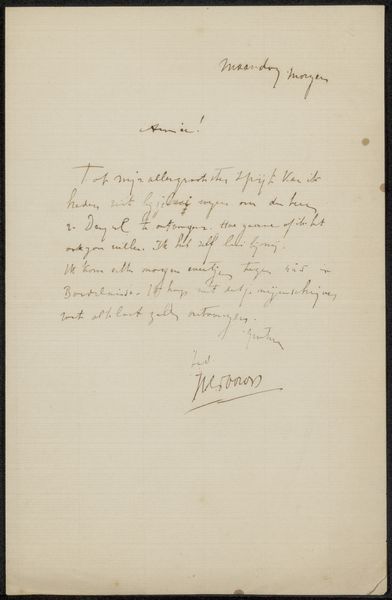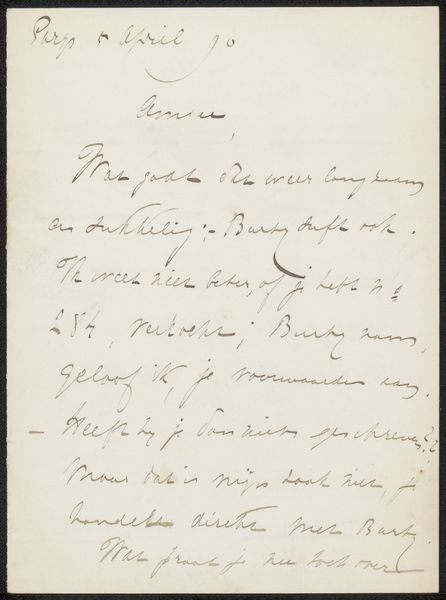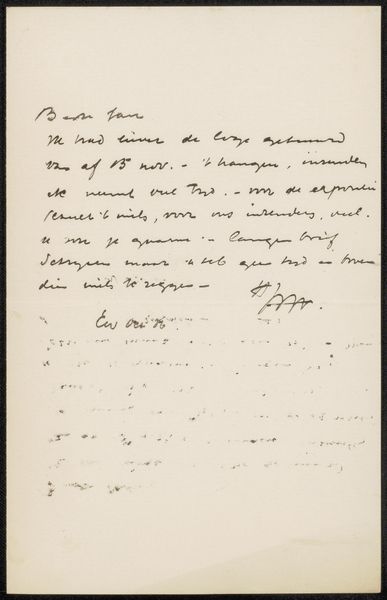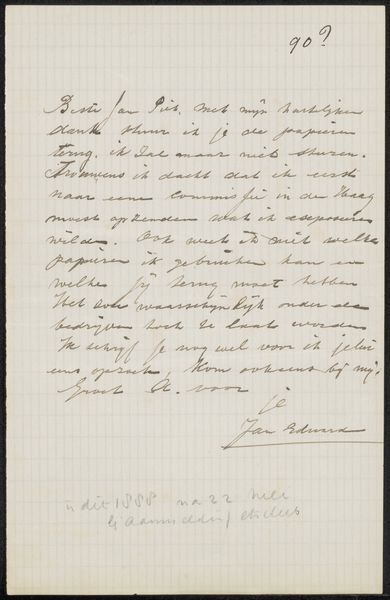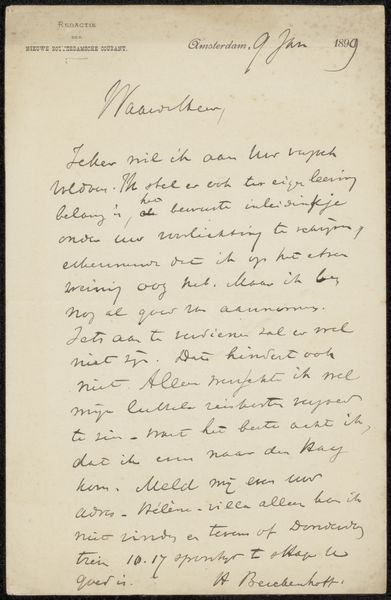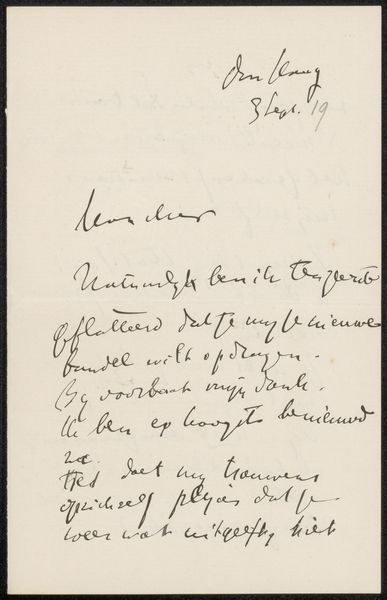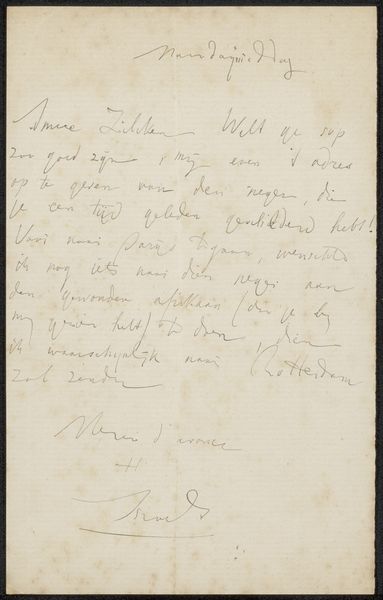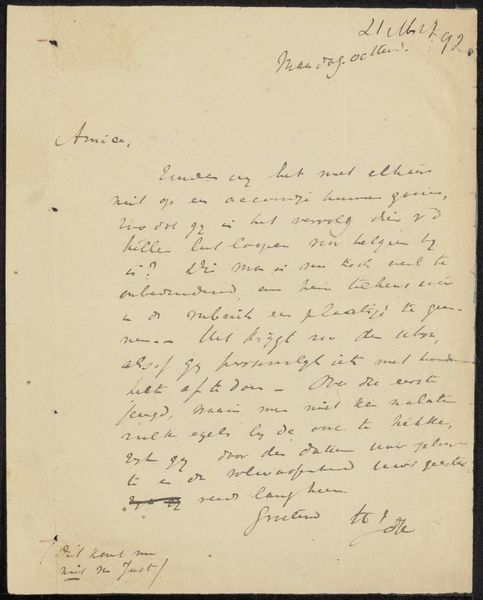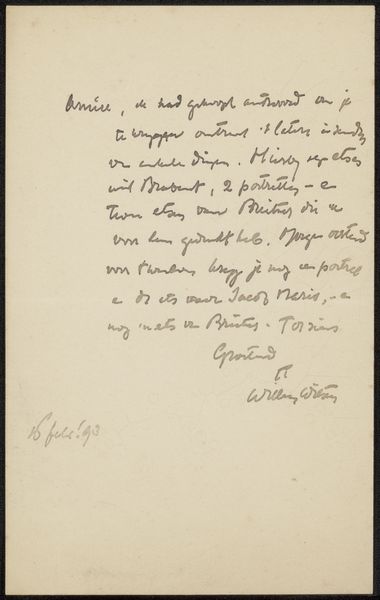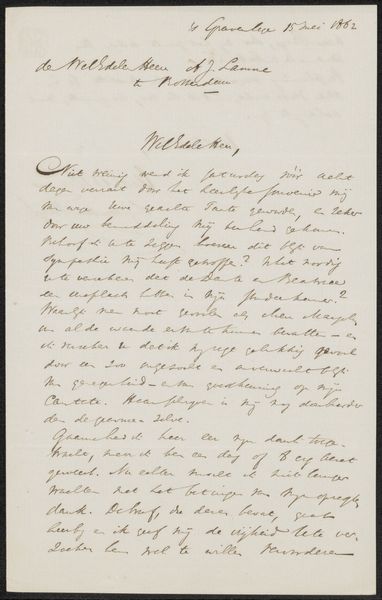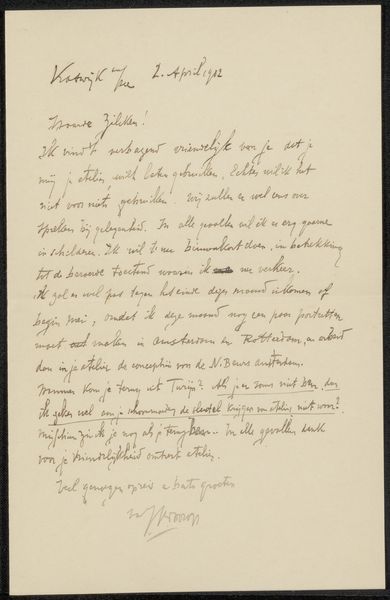
drawing, paper, ink, pen
#
drawing
#
paper
#
ink
#
pen
Copyright: Rijks Museum: Open Domain
Curator: Here we have Willem Witsen's "Brief aan Jan Veth," a work created between 1874 and 1923. It’s pen and ink on paper, and a rather intimate glimpse into the artist's life, held at the Rijksmuseum. Editor: My initial impression is of fragility. The script seems both delicate and firm at the same time; it reveals much by its composition and reminds me of quiet conversations and old-world connections. Curator: That's perceptive. Witsen, active in a time of immense social and political upheaval, positions himself here in relation to his colleague, but the text's inherent limitations allow us to focus on his social connections at that specific period. The question is, can this reveal wider questions about the artistic and political landscape of the Netherlands at the time? Editor: Absolutely. Look at the repeated strokes and letterforms; one may well interpret them as coded symbols reflective of inner states of being; a hidden meaning embedded within everyday missives and potentially pointing toward cultural, even archetypical understanding of a message in its form. How else might someone feel deeply when beholding the form of its construction alone? Curator: An intriguing reading. We might also ask about access and who is being spoken for and on whose behalf; this one document reflects societal positionality and perhaps subversion. The inherent limitations of this personal note is that the response can not ever be recovered with certainty and makes this potentially, however minutely, an act of defiance and change. Editor: And I might be inclined to argue further that while words might change meaning or context, these very forms have lingered longer in human comprehension—think the iconic forms that connect a wide swathe of eras; could that hold here, and should the audience contemplate an almost involuntary psychological reaction in beholding and registering meaning? Curator: A fascinating proposition—art as an ever-evolving narrative reflecting our collective history and perhaps even subtly altering it as each work meets a viewer who understands this interaction in this way. Editor: Precisely, one in which simple markings bear messages from not only then, but toward how art changes those codes of connection now and onward.
Comments
No comments
Be the first to comment and join the conversation on the ultimate creative platform.
